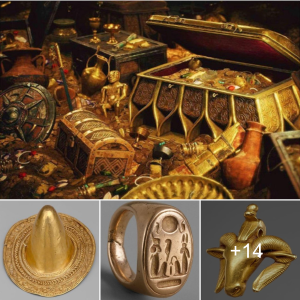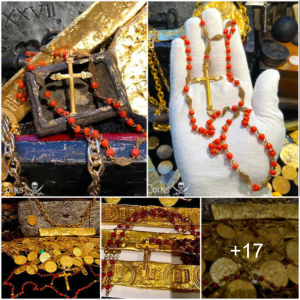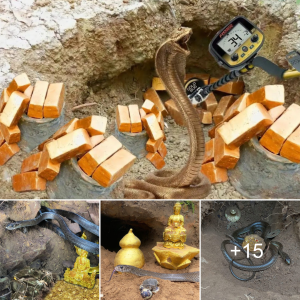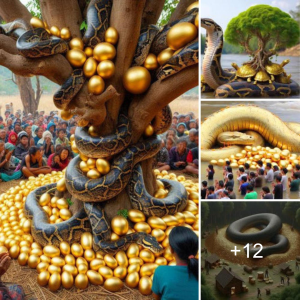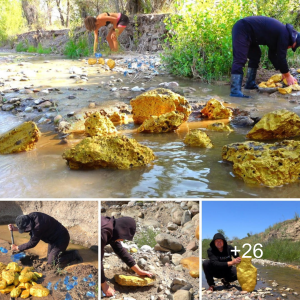Revealing the Face of History: Reconstruction of King Djoser, Also Known as Netjerikhet, Second King of the 3rd Dynasty (c. 2650–c. 2575 BCE) of Ancient Kemet
The painted limestone statue of Djoser, now in the Egyptian Museum in Cairo, is the oldest known life-sized Egyptian statue. The statue was found during the Antiquities Service Excavations of 1924–1925. Today at the site in Saqqara where it was found, a plaster copy of the statue stands in place of the original.

In contemporary inscriptions, he is called Netjerikhet, meaning “divine of body.” Later sources, including a New Kingdom reference to his construction, help confirm that Netjerikhet and Djoser are the same person.
While Manetho names Necherophes and the Turin King List names Nebka as the first ruler of the Third Dynasty, many Egyptologists now believe Djoser was the first king of this Dynasty, pointing out that the order in which some predecessors of Khufu are mentioned in the Westcar Papyrus suggests Nebka should be placed between Djoser and Huni, not before Djoser. More significantly, the English Egyptologist Toby Wilkinson has demonstrated that burial seals found at the entrance to Khasekhemwy’s tomb in Abydos name only Djoser rather than Nebka. This supports the view that Djoser buried and directly succeeded Khasekhemwy rather than Nebka.
Family

Djoser is linked to Khasekhemwy, the last king of the Second Dynasty of Egypt, through his wife, Queen Nimaethap (Nimaat-hap), via seals found in Khasekhemwy’s tomb and at Beit Khallaf. The seal at Abydos names Nimaat-hap as the “mother of the king’s children, Nimaat-hap”. On mastaba K1 at Beit Khallaf, the same person is mentioned as the “mother of the dual king”. The dating of other seals at the Beit Khallaf site places them in the reign of Djoser. This evidence suggests that Khasekhemwy is either the direct father of Djoser or that Nimaat-hap had him through a previous husband. German Egyptologist Gunter Dreyer found Djoser’s sealings at Khasekhemwy’s tomb, further suggesting that Djoser was the direct successor of Khasekhemwy and that he finished the construction of the tomb.
Her cult seems to have still been active in the later reign of Sneferu.
Hetephernebti is identified as one of Djoser’s queens “on a series of boundary stela from the Step Pyramid enclosure (now in various museums) and a fragment of relief from a building at Hermopolis” currently in the Egyptian Museum of Turin.
Inetkawes was their only daughter known by name. A third royal female was also attested during Djoser’s reign, but her name was destroyed. The relationship between Djoser and his successor, Sekhemkhet, is unknown, and the date of his death is uncertain.

Reign
The lands of Upper and Lower Egypt were united into a single kingdom sometime around 2686 BC. The period following the unification of the crowns was one of prosperity, marked by the start of the Third Dynasty and the Old Kingdom of Egypt. The exact identity of the Dynasty’s founder is a matter of debate due to the fragmentary nature of the records from the period. Djoser is one of the principal candidates for the founder of the Third Dynasty. Other candidates are Nebka and Sanakht. The possibility of complicating matters further is that Nebka and Sanakht are referring to the same person.
Egyptologist Toby Wilkinson believes that the weight of archaeological evidence favours Djoser (Netjerikhet) as Khasekhemwy’s successor and founder of the Third Dynasty. A seal from Khasekhemwy’s tomb at Abydos, combined with a seal from mastaba K1 at Beit Khallaf dated to Djoser’s reign, links the two pharaohs together as father and son, respectively. The seal at Abydos names a ‘Nimaat-hap’ as the mother of Khasekhemwy’s children, while the other seal at Beit Khallaf names the same person as the ‘mother of the dual king. Further archaeological evidence linking the reigns of the two pharaohs together is found at Shunet et-Zebib, which suggests that Djoser oversaw the burial of his predecessor. Ritual stone vessels found at the sites of the tombs – Khasekhemwy’s tomb at Abydos and Djoser’s tomb at Saqqara – of the two pharaohs also appear to have come from the same collection, as samples from both sites contain identical imagery of the god Min. This archaeological evidence is supplemented by at least one historical source, the Saqqara king list, which names Djoser as the immediate successor of Beby – a misreading of Khasekhemwy.
Length of reign
Manetho states Djoser ruled Egypt for twenty-nine years, while the Turin King List states it was only nineteen years. Because of his many substantial building projects, particularly at Saqqara, some scholars argue Djoser must have enjoyed a reign of nearly three decades. According to Wilkinson’s analysis and reconstruction of the Royal Annals, Manetho’s figure appears to be more accurate. Wilkinson reconstructs the Annals as giving Djoser “28 complete or partial years”, noting that the cattle counts recorded on Palermo stone register V, and Cairo Fragment 1, register V, for the beginning and ending of Djoser’s reign, would most likely indicate his regnal years 1–5 and 19–28. The Year of coronation is preserved, followed by the year events receiving the twin pillars and stretching the cords for the fortress Qau-Netjerw (“hills of the gods”). Unfortunately, next to all entries are illegible today.
Period of reign
Various sources provide various dates for Djoser’s reign. Professor of Ancient Near East history Marc van de Mieroop dates Djoser’s reign to somewhere between 2686 BC to 2648 BC. Authors Joann Fletcher and Michael Rice date his reign from 2667 BC to 2648 BC, giving a regnal period of 18 partial or complete years. Rice further states that Nebkha was Djoser’s brother and predecessor. Writer Farid Atiya provides a similar regnal period to Fletcher and Rice, offset by a single year – 2668 BC to 2649 BC. This dating is supported by authors Rosalie and Charles Baker in Ancient Egypt: People of the Pyramids. Egyptologist Abeer El-Shahawy, in association with the Egyptian Museum in Cairo, places Djoser’s reign from 2687 BC to 2668 BC for a similar 18 partial or complete years. Author Margaret Bunson places Djoser as the second ruler of the Third Dynasty and sets his reign from 2630 BC to 2611 BC for 19 partial or complete year-long control. In her chronology, Djoser is preceded by Nebka as the “Founder of the Third Dynasty”, reigning from 2649 BC to 2630 BC. She, like Rice, makes Nebka, a brother of Djoser.
Political activities
Djoser dispatched several military expeditions to the Sinai Peninsula, where the local inhabitants were subdued. He also sent expeditions to mine for valuable minerals such as turquoise and copper. The Sinai was also strategically important as a buffer between the Nile valley and Asia. This is known from inscriptions found in the desert there, sometimes displaying the banner of Set alongside the symbols of Horus, as had been more common under Khasekhemwy.
His most famous monument was his step pyramid, which entailed the construction of several mastaba tombs one over another. These forms eventually led to the standard pyramid tomb in the later Old Kingdom. Manetho, many centuries later, alludes to architectural advances of this reign, mentioning that “Tosorthros” discovered how to build with hewn stone, in addition to being remembered as the physician Aesculapius and for introducing some reforms in the writing system. Modern scholars think that Manetho originally ascribed (or meant to ascribe) these feats to Imuthes, who was later deified as Aesculapius by the Greeks and Romans and corresponded to Imhotep the famous minister of Djoser who engineered the Step Pyramid’s construction.
Some fragmentary reliefs found at Heliopolis and Gebelein mention Djoser’s name and suggest he commissioned construction projects in those cities. Also, he may have fixed the southern boundary of his kingdom at the First Cataract. There is an inscription known as the Famine Stela, which claims to date to the reign of Djoser but was probably created during the Ptolemaic Dynasty. This inscription relates how Djoser rebuilt the temple of Khnum on the island of Elephantine at the First Cataract, thus ending a seven-year famine in Egypt. Some consider this ancient inscription a legend at the time it was inscribed. Nonetheless, it shows that Egyptians still remembered Djoser more than two millennia after his reign.
Although he seems to have started an unfinished tomb at Abydos (Upper Egypt), Djoser was eventually buried in his famous pyramid at Saqqara in Lower Egypt. Since Khasekhemwy, a pharaoh from the 2nd Dynasty, was the last pharaoh to be buried at Abydos, some Egyptologists infer that the shift to a more northerly capital was completed during Djoser’s time.
Djoser and Imhotep
One of the most famous contemporaries of King Djoser was his vizier (tjaty), “head of the royal shipyard”, and “overseer of all stonework”, Imhotep. Imhotep oversaw stone building projects such as the tombs of King Djoser and King Sekhemkhet. It is possible that Imhotep was mentioned in the also famous Papyrus Westcar, in a story called “Khufu and the magicians”. But because the papyrus is badly damaged at the beginning, Imhotep’s name is lost today. A papyrus from the ancient Egyptian temple of Tebtunis, dating to the 2nd century AD, preserves a long story in the demotic script about Djoser and Imhotep. In Djoser’s time, Imhotep was of such importance and fame that he was honoured by being mentioned on statues of king Djoser in his necropolis at Saqqara.
Tomb
Djoser was buried in his famous step pyramid at Saqqara. This pyramid was initially built as a nearly square mastaba. Still, five further mastabas were piled, each smaller than the previous one, until the monument became Egypt’s first step pyramid. The supervisor of the building constructions was the high lector priest Imhotep.
The pyramid
The step pyramid is made of limestone. It is massive and contains only one tight corridor leading to the close midst of the monument, ending in a rough chamber where the entrance to the tomb shaft was hidden. This inner construction was later filled with rubble, for it was of no use anymore. The pyramid was once 62 metres high and had a base measurement of ca. 125 X 109 metres. It was tightly covered in finely polished, white limestone.
